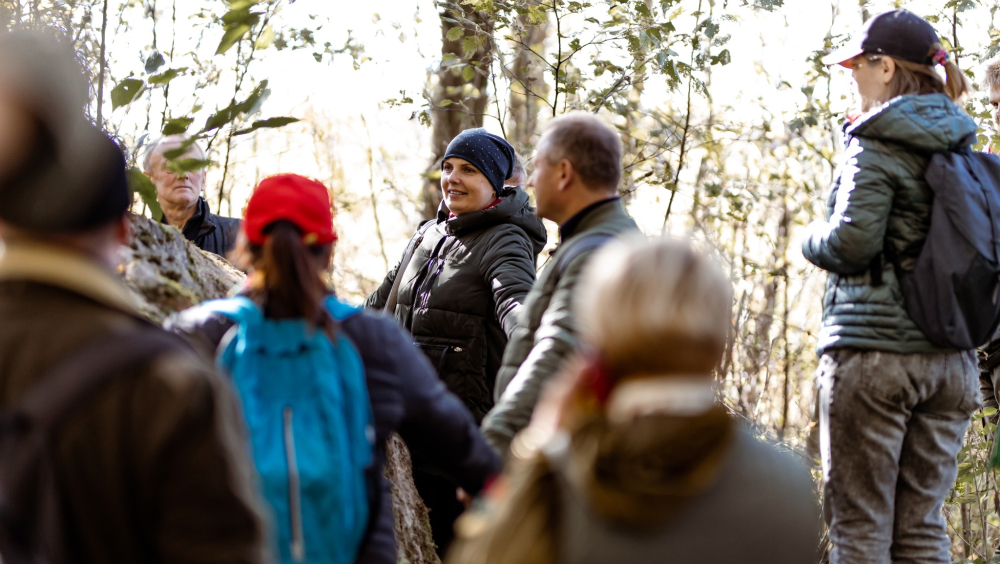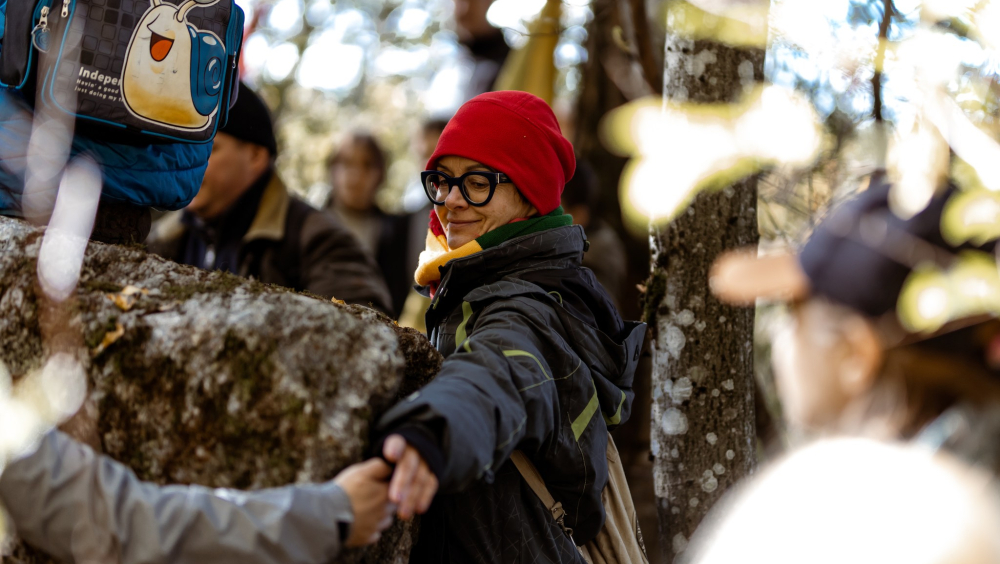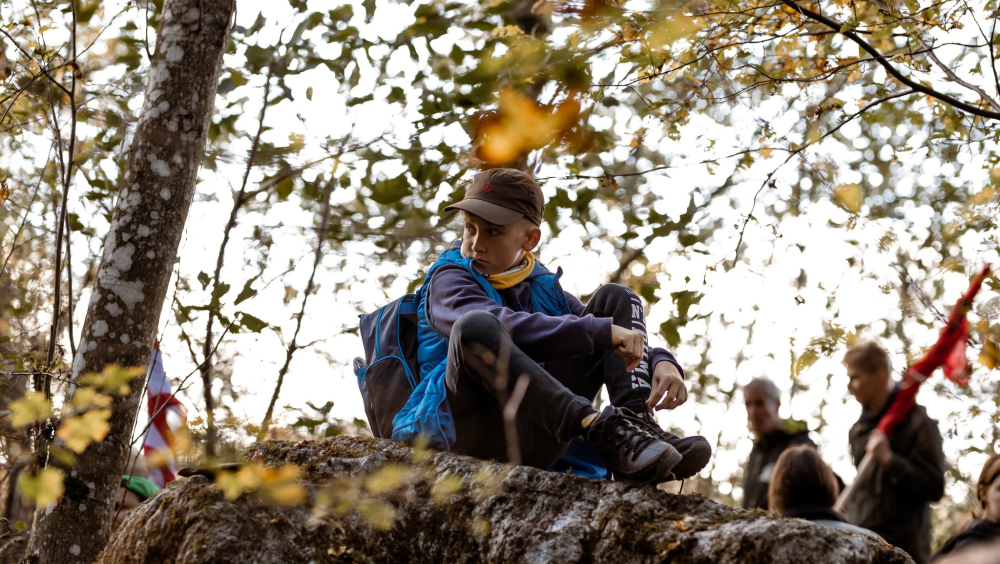Stone memory
This is a story about the oldest mourners in the history of this earth - stones whose memory doors will not be opened by conventional keys - fast internet and a scanner - you will have to look for unusual ways if you really want to understand yourself and the space you live in more deeply. The story was inspired by Lina's and Justinas' experience of discovering the stone, proving that stones can be rediscovered and loved as historical and cultural assets. Turning to the stones and seeking to unlock the memory contained in them is a form that allows us to combine several aspects characteristic of the European attitude and approach: sustainability, the cultivation of memory culture, the gathering and cooperation of different generations and social groups for creative activities - a common narrative of the future.
Open data slogans are echoing across Europe. Not exclusively in Lithuania, the aim is to open the administrative data of various institutions to the public, making it possible to measure and compare them in different sections. In parallel, the digitization processes of archives, museums and other memory institutions are taking place, and historical documents, visual and audio artifacts are becoming more and more accessible - materials that allow expanding the individual or collective memory of a person, deepening knowledge, creating a further story about a specific place, space, period, people, objects. The accelerated digitization process, the accelerating Internet creates the feeling that soon we will not only be flooded with endless news from all over the world, but we will also know everything about the past, because we will have wide access to the memory of the state and civilization. This anthropocentric feeling and image for me, an archive and digitization enthusiast, was interrupted by a walk organized in the autumn of last year in the vicinity of Šventai (meaning Sacred place) village. And specifically, a stone discovered by friends Lina and her son Justin on the eve of this walk, but buried long ago in written sources. We would like to know more about the stone of impressive size and an even more amazing story about itself, but in order to have a conversation with the stone, we need to find new concepts, a viewing angle. For the nurturers of history, nature, culture, in the age of digitization, one would like the memory of the stone to be digitized and read easily. Hovewer conventional keys - fast internet and a scanner - will not be enough to open the doors of the oldest mourners of the history of this earth - stone archives - you will have to look for unusual ways if you really want to understand yourself and the space you live in more deeply. The stone that inspired the study of the memory of stones and was unexpectedly discovered is extraordinary - it is a mythological stone from the village of Kuliškiai (Kulis means stone in the dialect), which was named as "Petrified hunter" in a report written several decades ago. The Kuliškiai stone, which was considered lost by the researchers of the Baltic cultural heritage and disappeared from the visible natural horizon together with another yet unidentified stone, was pulled out of its original location during the Soviet era by reclamation workers, but not split, as was thought until then, and remained surrounded by trees in a nearby forest. If I would be able to describe in words the joy of the discovery of Lina and Justinas after deciphering the memories of several local residents and exploring the fields, bogs and meadows and finding, cleaning the accumulated lands from stone and preparing the stones for the first new meetings with a group of curious people who want to know the past. After discovering the stone, Lina and Justinas continue to search for more facts to confirm the identity of the stone, and I want to spread the meaning of this and all other stones in our lives, to open their memory. Only one but eloquent legend has been preserved about the stone. The legend interweaves images characteristic of the white and Christian culture. However, in order to understand the images used in this legend, knowledge of the white worldview is necessary. In Lithuanian mythology and according to the surviving names of the stones, several types of mythological stones are distinguished — intelligent stones — creating an image of stones as sources of wisdom. The names of the stones as petrified people are also found, suggesting the power of the stones as a link to the afterlife. And also, the names of stones, denoting the place of concentration of stones as rituals of human life. Not far from the mentioned stone, a unique stone in the region has also been preserved - a throne, in terms of its structure, it is close to the stone thrones preserved in other parts of Europe, on which the coronation ceremonies of the rulers took place. Stones have always aroused the imagination of people observing them with their colors, patterns, and imprints. It called for the creation of stories and legends, and in the Stone Age, stones were the material for making tools and jewelry, catching rays of the sun, and setting the time. Larger stones became reference points, orientation signs, while residents used smaller stones to decorate and decorate their homesteads. Stones are also used as a building material - a resource, and the most expressive example is the church in the town of Kvėdarna, which is not far from the Kuliškiai stone - built almost entirely of stones! In addition, two famous open-air stone museums can also be visited in the Žemaitija region. Stones also bear witness to painful moments in life — the names and years of the dead are written on them. And during the Soviet era, during land reclamation — draining meadows and forests and forcibly evicting residents from their homes, as well as dragging the stones that were there from the fields, destroying the landscape and human and natural paths formed over the course of several centuries. Today, in some places of the disappeared villages, the residents write the names of the disappeared place names on larger stones, thus trying to preserve the disappearing memory of the place — the stones become memory keepers in the true sense of the word. So, one can talk about stones for hours — discussing their geological information and thus analyzing the oldest past of the place. It is possible to interpret the marks of nature and previous generations left on the stones. You can tell and listen to both mythological and life, personal stories and experiences. Stones can be given as gifts. Stones as historical and cultural assets can be rediscovered and loved, as Lina and Justinas did. I sincerely hope that the nearby stones, their cultural, historical and geological memory will be loved and talked about, maybe even digitized and opened by all Europeans.
Turning to the stones and seeking to unlock the memory contained in them is a phenomenon that combines several aspects characteristic of the European attitude and attitude. Stone, as a relic of nature, invites us to talk more about longevity — sustainability, moderation in consumption, creates a more sensitive relationship with nature and, accordingly, a deeper understanding of the effects of climate change. Stones are also significant as places of spiritual inspiration and worship in pre-Christian culture, objects with different interpretive sub-themes, but characteristic of all European countries, and today, with the help of creative methods, they can become sources of inspiration and motivation, connecting different generations for common creative activities and stories. representatives of social groups. The stone that became the inspiration for this story is also a sign of the Soviet occupation of Lithuania and the brutal destruction of nature and culture - melioration - that was carried out during it, creating an environment to talk about the effects of the destruction of culture and helping to realize the importance of cultivating memory, which during the last years of the war in Ukraine, is gaining more and more importance and a greater value that is priceless and guarantees Europe's survival.


